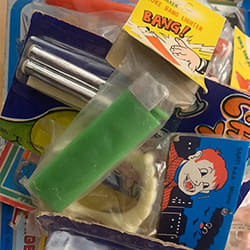Like what?
In Japan, thin-sliced meat for making shabu-shabu is sold everywhere, but there’s apparently little demand for it in Italy, so you won’t find it on the supermarket shelves. I’ve heard that there’s a butcher in a part of town where a lot of Japanese stationed overseas used to live, and that it sells meat cut the way the Japanese like it if they order “shabu-shabu”. It’s so far from my house, though, that I’ve never tried to go there. Instead, I went to a butcher by my house and casually wondered aloud whether anyone in Italy could slice meat as thinly as they did in Japan. “Thin-sliced?” the butcher said. “I can slice it thin—you just have to ask. I’ll even cut it with my own skilled hands instead of using the machine,” he boasted with full of confidence, and started cutting. “Well? How about this?” he asked. “Plenty thin, right?” However, as I had expected, the meat was nowhere near what a Japanese person would consider thin-sliced. Of course I smiled and said, “Wow, yes! You’re on the right track!”
Meanwhile, given that almost all the chicken here is sold with bones and skin, you’d think it’s also cooked that way. Just like you’d expect from a knife-and-fork country, right? On the other hand, it’s interesting that you can buy turkey, rabbit, and veal just about anywhere. A typical Japanese family would find it pretty hard to get their hands on veal, right?
Veal is sold in all kinds of different cuts. I like several of them, but my favorite is a delicious cut that’s actually really cheap. Score!

When the packs are all piled up in the store I start digging through them, excitedly wondering whether I’ll find it, like I’m on some kind of treasure hunt. As you can see, it’s a pretty chunky cut of meat. It’s a cut of veal called cappello di prete (literally “priest’s hat”), and they don’t always have it, though you can sometimes find it. I’m pretty sure it comes from the base of the front legs—which means it’s muscle, but it also has a bit of fat in it. When you cut it, the slices are shaped like a priest’s hat, which is where it got its name. It’s already sliced when you buy it in packs at the grocery store, so it’s not exactly in the shape of a hat you’d want to wear.

Once you brown the surface, you add chopped garlic, carrots, onion, and whatever else, a splash of white wine, and stew it for about an hour. I’m a terrible cook, but even I can manage to make a veal dish with a delightful consistency using this recipe.
Incidentally, there’s also a dish with the same “priest’s hat” name. This “priest’s hat” actually looks just like it. It’s a lovely plate that makes for a fancy presentation.

While I’m at it, there’s also a green vegetable that comes in long, thin bunches that they call “monk’s beard”. It’s got a bit of tartness to it, and it’s usually boiled in salted water and served as a garnish.

I wrote about the “priest-choker pasta” in my post the other day—pretty soon we’ll have a whole menu of food named after religious men! Not sure what we’ll do about dessert, though…




























































